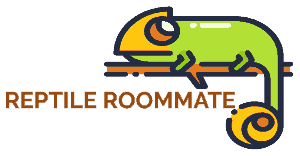Cuban False Chameleon Diet; What Do False Chameleons Eat?
False chameleons, Cuban false chameleons or bearded anoles; whatever you call these incredible little lizards they are known for diets that consist of mostly snails and some small insects, especially in the wild.
False chameleons are specialized snail eaters that are able to use their powerful jaws to break open a snail’s shell in order to consume the meaty flesh trapped inside! In the wild false chameleons will consume a majority of their diet by hunting down snails and devouring them.
Reptile Roommate is a participant in the Amazon Services LLC Associates Program. As an Amazon Associate I earn from qualifying purchases.
How to Feed a False Chameleon
Snails, snails and more snails
Bearded anoles are molluscivores; the majority of their nutrition comes from eating snails and slugs. Though they do prefer snails false chameleons will also consume a variety of insects which helps supplement their diet.
In captivity it is important to try and provide your false chameleon with a diet that closely tries to replicate the diet that it eats in nature. Many pet stores and even aquarium stores sell any number of varieties of snails that can be offered to your false chameleon.
Breeding your own snail is also something that many bearded anole keepers, and especially breeders, do to keep an endless supply of snails ready for the “buffet line!”
I like to provide my false chameleons with live snails that they can ‘hunt’ and use their jaws to crack the shell and eat the flesh. However, a product like Zoo Meds Can O’ Snails can be used to provide nourishment as well. Can O’ Snails are small tins full of shelled snails that can be conveniently fed to your false chameleon with ease!
Insects Are Great Too
False chameleons will also readily eat a variety of insects so you can supplement their diet by providing one or more of the following insects;
- Crickets
- Grasshoppers/Locusts
- Crickets
- Mealworms
- Hornworms
- Silkworms
- etc
False chameleons can be fed snails a couple of times a week and the rest of the days, their diet can be supplemented by providing a few calcium/vitamin dusted crickets (or any of the above) 2 to 3 times a week.
Hydration
Providing water and hydration is extremely important in maintaining a Cuban false chameleon’s health. False chameleons will soften drink out of water bowls however, many will not get adequate hydration from their water intake from a dish/bowl.
Most false chameleon keepers provide some sort of mist or drip system that allows for slow-moving water to flow across branches or leaves in the enclosure. This sort of “natural flow” really encourages Cuban false chameleons to drink and maintain proper hydration.
Last Minute Feeding Tips
- Snail shells that are too large or too tough for your bearded anole to crack; can be cracked or broken with a small hammer or mallet prior to putting into its enclosure.
- Wild caught snails and insects can present some issues like parasites and chemical/pesticide exposure. Make sure that the food you feed your Cuban false chameleon is both nutritious and parasite/chemical free.
- Try to remove any uneaten food; snail and insect parts/pieces as well as any live insects that aren’t consumed while under your supervision. Surprisingly, crickets and locust can injure or stress your bearded anole.


